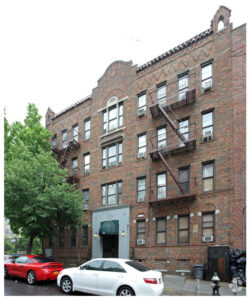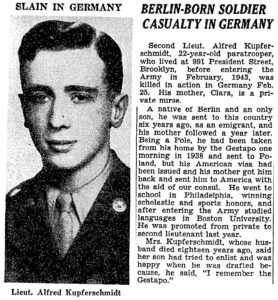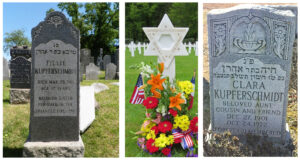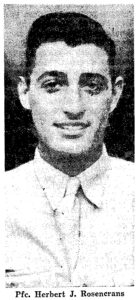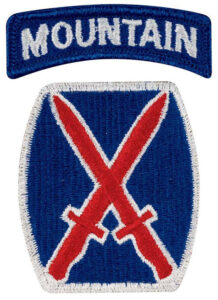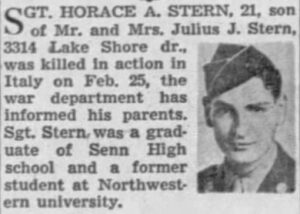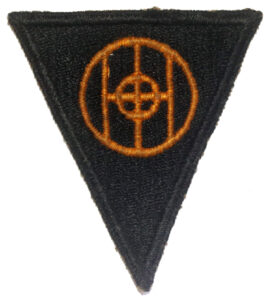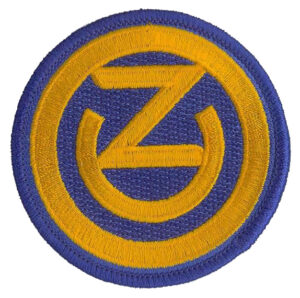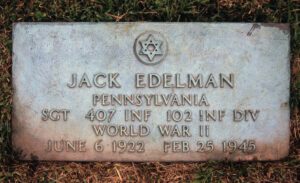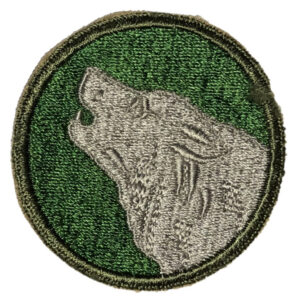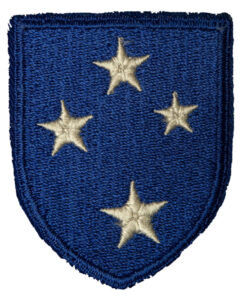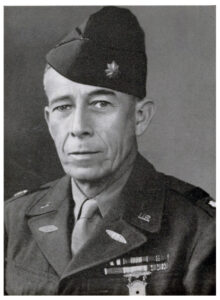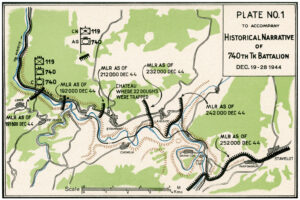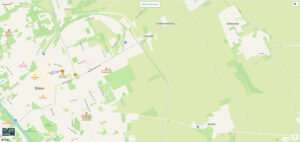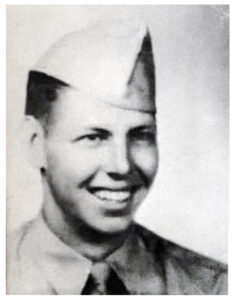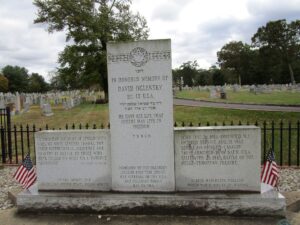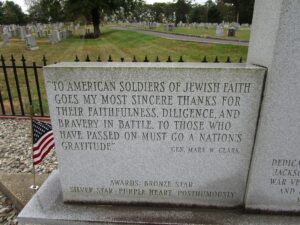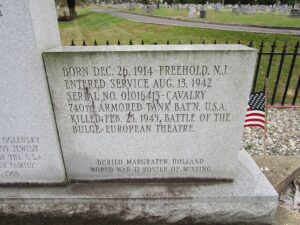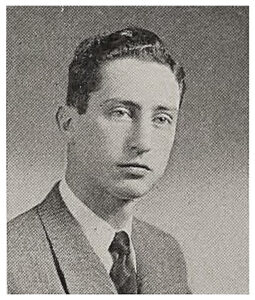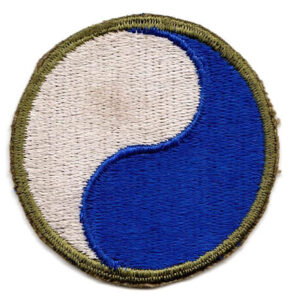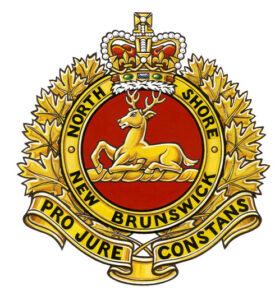As part of my ongoing series of posts about the military service of Jewish soldiers in the Second World War – based on news reports in The New York Times – this post covers February 25, 1945, its basis being articles about Second Lieutenant Alfred Kupferschmidt and Private First Class Herbert Joel Rosencrans, who were both killed in action on that date.
Given the relatively large number of military casualties that occurred on this date for whom I have information, historical accounts for this late-February-day will be presented as three posts: One for ground forces, one for the United States Marine Corps and Navy, and the last for the United States Army Air Force, the latter including information about two men who became prisoners of war.
And so, to begin ground forces: Here are records for Jewish military casualties in the United States Army, and a relative few soldiers from the armed forces of Canada, England, Poland (specifically, the Polish Army East) and the Soviet Union.
______________________________
Second Lieutenant Alfred Kupferschmidt
An appointment in America.
An appointment in Germany.
An appointment in Samarra?
_____ _____
If, as John Donne wrote…
“No man is an island,
Entire of itself;
Every man is a piece of the continent,
A part of the main,”
…so is every event:
Not an island in time,
Unto itself;
But a child of the past;
And father to a future.
_____ _____
Such was the life of United States Army Second Lieutenant Alfred Kupferschmidt (0-552513), whose death in combat was reported in The New York Times on May 6, 1945. An exploration of his past reached into an event eleven years before his birth, which has resonance even today.
Born in Berlin on September 29, 1922, he was the son of Clara Kupferschmidt (12/27/01-10/24/72), whose wartime address was 991 President Street in Brooklyn. Sadly, his father’s name has disappeared into the mists of the past. Having resided for a time in Philadelphia, Alfred Kupferschmidt’s secondary wartime “contact” was Harry M. Bass, who lived a 2745 North Front Street in that city.
Via Apartments.com, here’s a contemporary image of 991 President Street.
Assigned to the 116th Reconnaissance Squadron of the 101st Cavalry Group, he served in the Squadron’s IPW (Interrogation Prisoners of War) Team due to his fluency in German. It was in this capacity that he was killed in action on February 25, 1945. Though notice of his death appeared in three publications during that year – Aufbau, on March 30; The Jewish Exponent, on June 29; The New York Times, in a full obituary on May 6 – like many WW II American Jewish servicemen chronicled in this series of posts, his name never appeared in the 1947 compilation American Jews in World War Two.
His sole military award was the Purple Heart.
Here’s the account from the Times:
BERLIN-BORN SOLDIER CASUALTY IN GERMANY
Second Lieut. Alfred Kupferschmidt, 22-year-old paratrooper, who lived at 991 President Street, Brooklyn, before entering the Army in February, 1943, was killed in action in Germany Feb. 25. His mother, Clara, is a private nurse.
A native of Berlin and an only son, he was sent to this country six years ago, as an emigrant, and his mother followed a year later. Being a Pole, he had been taken from his home by the Gestapo one morning in 1938 and sent to Poland, but his American visa had been issued and his mother got him back and sent him to America with the aid of our consul. He went to school in Philadelphia, winning scholastic and sports honors, and after entering the Army studied languages in Boston University. He was promoted from private to second lieutenant last year.
Mrs. Kupferschmidt, whose husband died eighteen years ago, said her son had tried to enlist and was happy when he was drafted because, he said, “I remember the Gestapo.”
And, the obituary as published in the Times.
Aufbau‘s article inevitably parallels that of the Times, but presents details not revealed in the “paper of record”:
2nd Lt. Alfred Kupferschmidt died in Germany on February 25 at the age of 23. In 1938, when he was 16 years old, the Nazis deported him from his native Berlin to Poland because he was the son of Polish citizens. At the intervention of his mother, who in the meantime had received the immigration visas for America for herself and for him, he was brought back to Berlin after seven weeks. Since the outbreak of war, Lt. Kupferschmidt had no more ardent desire than to be accepted into the army and settle accounts with the Nazis. Before joining the army, he studied aerotechnical engineering. A cousin of his, also named Alfred Kupferschmidt, serves in the R.A.F.
2nd Lt. Alfred Kupferschmidt ist am 25. Februar im Alter von 23 Jahren in Deutschland gefallen. 1938, als er 16 Jahre alt war, haben ihn die Nazis aus seiner Geburtsstadt Berlin nach Polen abgeschoben, weil er der Sohn polnischer Staatsbürger war. Auf Intervention seiner Mutter, die inzwischen für sich und für ihn die Einwanderungsvisen nach Amerika erhalten hatte, wurde er jedoch nach Sieben Wochen wieder nach Berlin gebracht. Lt. Kupferschmidt hatte seit Ausbruch des Krieges keinen glühenderen Wunsch, als in die Armee aufgenommen zu warden und mit den Nazis abzurechnen. Vor seinem Eintritt in die Armee hare er “aerotechnical engineer” studiert. Ein Vetter vo ihm, der ebenfalls Alfred Kupferschmidt heist, dient in der R.A.F.
The actual, as it appeared in Aufbau.
Though inevitably – given their wartime publication – these brief articles reveal little to nothing about the events of February 25, Lt. Kupferschmidt’s military service is described and placed in a clearer context in Terry Trautman’s Clippings From A Cluttered Mind, and, Melaney Welch Moisan’s Tracking The 101st Cavalry, passages from which respectively follow:
From Clippings From A Cluttered Mind…
By this time [late 1944 to early 1945], the allied juggernaut was rolling across Europe after the D-Day invasion and German Prisoners of War (Prisoner of War) were being captured in increasing quantities. What the Allied Command soon learned was that the German-born soldiers were not only fluent in the German language, they also knew the culture and psyche of Germans better than anyone else, a deep intimate knowledge born from the small details of their lives growing up in Germany. As children they had gone to school and played sports with boys who were now soldiers in the German army. As interrogators of Prisoner of War they would be familiar with the workings of German minds, the habits of German life and the influences of Nazi doctrine upon German soldiers and civilians alike. They also knew regional dialects and accents, something that could not be taught to American soldiers who knew only school book German. The German-born soldiers used this innate knowledge to great advantage.
Their infiltration among American soldiers and officers in command was not without some difficulty. Surprised by the interrogators’ heavy accents and fearful of German spies in their midst, regional officers often debated among themselves whether to disarm them and assign them to permanent KP duty. It usually took the Officer in Charge of the IPW team … to assure the antsy regional officers that these guys were on our side. Before long it became apparent the German-born soldiers were performing admirably and once word got around, there were a lot of demands and requests for “Ritchie Boys.”
The IPW teams were initially ensconced behind the front lines and Prisoner of Wars were transported to them for interrogation. The information the interrogators sought included enemy locations, manpower size, troop movements, etc. They used maps and aerial photos in their interrogations. While this worked fine for a while, it became apparent that the intel the IPW teams was getting was too slow to be of immediate value. A recommendation from Major Leo J. Nawn changed that. He recommended to “…attach one member of the IPW team to each intelligence section (at the front) for prompt interrogation on matters pertaining to the unit’s immediate situation.” This meant that while the information was timely and extremely valuable, it also put the IPW soldiers in harm’s way. In one report, Uncle Fred (now Capt. Hellman) wrote that as their team advanced on the front, “…we kept moving ever onward, our travels spiced with the usual ingredients of war – bombing, strafing, sniping, artillery.” In fact, Uncle Fred reported that his second in command, Lt. Alfred Kupferschmidt “was killed in action 25 February 1945 in the vicinity of Lauterbach, Germany. Lt. Karl H. Schafer replaced Lt. Kupferschmidt on 4 March 1945.” Both of these soldiers were natives of Germany.
In Tracking The 101st Cavalry…
On the afternoon of February 25, 2nd Lt. Charles Pierce, Troop A, 116th Squadron, and 2nd Lt. Alfred Kupferschmidt, of the IPW team, were at Troop A’s outpost near Werbeln with a prisoner of war who had been captured earlier that day. The prisoner pointed out specific installations in Schaffhausen, and then he told Pierce and Kupferschmidt that he and the second prisoner had thrown away their weapons about fifty yards inside the wood, near the spot where they exited to surrender. Pierce and Kupferschmidt asked the prisoner to show them the location, and, at about 5:30 that evening, the group headed down the hill. At the bottom, they met up with other members of the 116th: 1st Lt. Robert Schafer, S/Sgt. Walter Mennel, and Pvt. Earl Geiger, all of Troop C; and S/Sgt. John Schnalzer, Troop A. At the base of the hill, the men, with the prisoner in the lead, walked cautiously in the dark of early evening along the edge of a marked mine field that followed the line of the woods. They moved slowly, as one false step would mean disaster. Instead, disaster fell out of the sky when, without warning, a concentration of mortar fire fell all around them.
The blast killed 2nd Lt. Pierce instantly, and S/Sgt. Schnalzer jumped or was thrown into a nearby ditch. Lt. Schafer jumped into the same ditch, falling on top of Schnalzer. No sooner had they landed than a second mortar shell flew through the air and landed almost directly on top of them, killing Schafer instantly and hurling his body from the ditch to the edge of the mine field.
Wounded in the hands and legs, Sgt. Schnalzer managed to jump up and run back the way they had come to take cover in a small brick building. While running, he noticed the panicked prisoner run directly into the mine field. There was nothing Schnalzer could do but watch as the fleeing prisoner tripped a land mine and flew into the air. Also killed were 2nd Lt. Kupferschmidt, who died within an hour of being wounded, and S/Sgt Mennel, who died later the day. Pvt. Geiger was seriously wounded. (pp. 29-30)
The full names of the soldiers who were killed in this incident were:
2 Lt. Charles New Pierce (born in 1923)
1 Lt. Robert Knox Schafer (born in 1922) (See also Cenotaph Memorial)
Though PFC Earl Geiger (10/18/22-12/16/67) survived the mortar attack, it sadly seems – based on information at FindAGrave – that he was permanently disabled, for he passed away not long after his 45th birthday.
Lt. Karl H. Schafer, mentioned in Clippings From A Cluttered Mind as Lt. Kupferschmidt’s replacement, arrived with his family in the United States in 1929 at the age of seven. He survived the war, and passed away in Illinois in 2013 at the age of 91.
But, there’s more, and this is where the past intersects the future, in a way best suited to fiction.
And so…
…while searching for information about Alfred Kupferschmidt via FultonHistory, I discovered this article, published in The Brooklyn Eagle on October 18, 1942.
Somber Rites Recall Triangle Fire Tragedy
A number of Brooklyn residents will participate late today at a somber ceremony reviving memories of an old tragedy. In Mount Richmond Cemetery, Staten Island, a headstone will be unveiled over the grave of a victim of the historic Triangle fire.
Reposing in the hitherto unmarked grave is the body of Tillie Kupferschmidt, who was 16 when in March of 1911 she and 147 other employees perished in the burning Triangle Waist Company factory, 23 Washington Place, Manhattan. An elder sister, Clara, a European refugee, is now living at 10 Saratoga Ave.
Friendless Immigrant
Tillie was a friendless immigrant, according to the story told by Mrs. Solomon Altenhaus of 686 E. 7th St. She had come to this country from a little town in Poland and, like so many other immigrants, was drawn into the then booming sweatshop needlework industry. After the fire her charred body, unclaimed by relatives or friends, was buried in Agudath Achim Chesed Shel Emeth, the Jewish Potter’s Field.
Several months ago, said Mrs. Altenhaus, Clara met Mr. Altenhaus, whom she had known as a leading citizen of their native town in Poland. Mr. Altenhaus provided her with details of the Triangle tragedy and Clara Kupferschmidt was shocked to learn that no marker had been placed on her sister’s grave.
Mrs. Altenhaus spoke to Mrs. Samuel Kramer of 1025 St. John’s Place, president of the Peczenyszyner Ladies Auxiliary, an organization named after the Polish town from which its member emigrated.
Through the efforts of the two, funds were raised for the purchase of the stone which will be unveiled today. Members of a number of organizations of former Peczenyszyner residents will be present.
The article itself…

… and, as it appeared in the newspaper. Specifically, page A3, lower left.
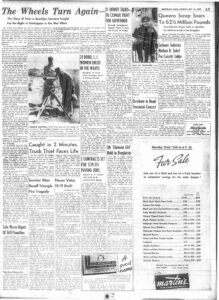
So, Clara Kupferschmidt had a sister.
So, Alfred Kupferschmidt had an aunt who, having been born in 1895, he would never know, though I assume he knew “of”.
This image of Tillie Kupferschmidt, at her FindAGrave biographical profile, is via Robert DiTolla, who from 2013 through 2014 contributed photographs and / or biographical information of 21 Triangle fire victims to FindAGrave. Three of these images, comprising those of Tillie Kupferschmidt, Julia “Yutta/Ita” Oberstein, and Bessie Viviano, appear to have been among a compilation of images published in a newspaper, but the title and date of that periodical are unknown.
A list of Triangle Fire victims at History on the Net lists information for Tillie as follows: “KUPFERSMITH, Tillie, 16, multiple injuries and burns. 750 E. Second Street. Identified by her uncle, Morris Schwartz. Name also given as Cupersmith/Kupersmith. Multiple newspapers, March 27.”
Information at the list of the 146 victims of the Triangle Fire, via Cornell University, differs from that at HistoryNet. Though Tillie’s age is identical, her full name is given as “Tillie Kupferschmidt”; her place of birth as Austria; her residence as 750 2nd Avenue in Manhattan. Her place of burial is listed as “Mount Richmond Cemetery”.
Though there doesn’t appear to be any “750 2nd Avenue” in Manhattan, within that borough there is a 750 East Second Street – where that street intersects with Essex Street – as indicated on the list of names at the HistoryNet article. This location is shown in the Oogle map below…
…while this map shows that address in a larger perspective.
Oddly, her death certificate lists her parents as “Golideo Borranai and Marris Schwartz”, which is impossible to square with the surname “Kupferschmidt”.
Curiously, neither source indicates that Tillie was married, which is evident via information at Ancestry.com. There, her husband is listed as Israel Teiksler. They were married on November 6, 1910, a mere month-and-a-half before the fire at 23-29 Washington Place in Manhattan.
_____ _____
Clara spent the remainder of her life as a private nurse, and passed away in 1972. She’s buried at Floral Park Cemetery, in New Brunswick, New Jersey.
And in the story of the Kupferschmidt family, I’m reminded of the ancient literary epigraph – known from both Judaism and Islam – as the “Appointment in Samarra”, which is the title and underlying theme – a sense of inevitability – of John O’Hara’s 1934 novel by that name.
As presented at the SubSubLibrarian, the tale goes as follows:
The Gemara relates with regard to these two Cushites who would stand before Solomon:
“Elihoreph and Ahijah, the sons of Shisha” (I Kings 4:3), and they were scribes of Solomon.
One day Solomon saw that the Angel of Death was sad.
He said to him: Why are you sad?
He said to him: They are asking me to take the lives of these two Cushites who are sitting here.
Solomon handed them to the demons in his service,
and sent them to the district of Luz, where the Angel of Death has no dominion.
When they arrived at the district of Luz, they died.
The following day, Solomon saw that the Angel of Death was happy.
He said to him: Why are you happy?
He replied: In the place that they asked me to take them, there you sent them.
The Angel of Death was instructed to take their lives in the district of Luz.
Since they resided in Solomon’s palace and never went to Luz, he was unable to complete his mission.
That saddened him.
Ultimately, Solomon dispatched them to Luz, enabling the angel to accomplish his mission.
That pleased him.
Immediately, Solomon began to speak and said:
The feet of a person are responsible for him; to the place where he is in demand, there they lead him.
The ultimate written source of the story is almost certainly the Babylonian Talmud, specifically, Sukkah 53a5-6, which you can read at Sefaria.org.
But, where is the justice – where is the fairness – in the tale?
Is there justice in the tale?
Is, there justice?
But, where is free will in the tale?
Is there free will in the tale?
Is, there free will?
_____ _____
This composite image shows the matzevot of Tillie, Clara, and Alfred. (Images by LeonC, Andy, and F Priam, respectively.) Information about Tillie Kupferschmidt also appears at the Wikipedia entry for the Triangle Shirtwaist Factory Fire.
______________________________
As described in the Times’ account of October 20, 1945 (probably based on the original award citation), PFC Herbert Joel Rosencrans (16105945) was awarded the Silver Star (and inevitably, the Purple Heart) for his actions as an infantry squad leader. Here’s the article:
Pfc. Herbert J. Rosencrans, Company C, 415th Infantry, 104th Division, son of Mr. and Mrs. Alvin J. Rosencrans of Woodmere, L.I., who died of wounds last Feb. 25 in Arnoldsweiler, Germany, has received posthumously the Silver Star Medal, it was announced yesterday.
On Feb. 25 Private Rosencrans, leading his squad forward in a fight for an enemy town, met a large force of enemy troops preparing to launch a counter-attack the citation said. Exposing himself to enemy artillery fire to determine the location of the enemy, he the organized a strong defense. When the enemy attacked, he led his men in a furious fight, inflicting heavy losses on the enemy. He was fatally wounded.
Private Rosencrans was born in this city Oct. 13, 1923, was graduated with honors from Woodmere Academy in 1941 and completed two years work at the University of Michigan. He entered the Army in March, 1943, and went overseas in August, 1944. Besides his parents, he leaves a brother, Robert M. Rosencrans of the Army Air Forces.
The full article…
Private Rosencrans’ mother was Eva (Green) Rosencrans. His family resided at 7 Willow Road in Woodmere. His name appeared in a casualty list published in the Long Island Star Journal on March 12, 1945, a similar list in the Nassau Daily Review Star on April 6, and in the “In Memoriam” section of The New York Times on February 24, 1946. His name does appear in American Jews in World War II; specifically, on page 418. He’s buried at Plot A, Row 1, Grave 7, at the Henri-Chapelle American Cemetery in Belgium.
______________________________
____________________
______________________________
Here‘s biographical information about other Jewish soldiers who were casualties on the 25th of February 1945…
For those who lost their lives on this date…
Sunday, February 25, 1945 / Adar 13, 5705
– .ת.נ.צ.ב.ה. –
…Tehé Nafshó Tzrurá Bitzrór Haḥayím
May his soul be bound up in the bond of everlasting life.
8th Infantry Division
Cowen, Carl, Pvt., 39722606, Purple Heart
28th Infantry Regiment
Killed in Action
Born Brooklyn, N.Y. 10/12/11
Mrs. Thelma Tillie “Gigi” (Cowen) Rittenberg Flapan (wife) (6/4/17-12/26/13)
248 North Chicago, St, / 2737 1/2 Fairmont Ave., Los Angeles, Ca.
Mrs. Bessie Cohen (mother) (5/8/90-5/20/67), Los Angeles, Ca.
Home of Peace Memorial Park, Los Angeles, Ca. – Mausoleum, Corridor of Remembrance, Crypt 310 NW
American Jews in World War II – 41
Fidler, Louis, PFC, 42127210, Purple Heart (in Germany)
28th Infantry Regiment
Killed in Action
Born Brooklyn, N.Y. 11/16/12
Mrs. Vivian (Hoffman) Fidler (wife) (1920-?), 2081 Wallace Ave., Bronx, N.Y.
Mr. and Mrs. Frank (1870-?) and Mary (1883-?) Fidler (parents)
Henri-Chapelle American Cemetery, Henri-Chapelle, Belgium – Plot F, Row 9, Grave 51
American Jews in World War II – 308
10th Mountain Division
(This image is via Medals of America.)
Stern, Horst “Horace” Alexander, Sgt., 36735406, Purple Heart (near Firenze, Toscana, Italy)
86th Mountain Infantry Regiment, I Company
Killed in Action
Born Kassel, Germany 1/17/24
Mr. and Mrs. Julius Jacob (4/10/94-5/2/83) and Lenora “Nora” (Kosman) (4/2/01-10/21/82) Stern (parents); Peter Jacob (brother) (5/21/28-7/10/66)
3314 Lake Shore Drive, Chicago, Il.
Student at Northwestern University
Florence American Cemetery, Florence, Italy – Plot F, Row 2, Grave 18
Chicago Tribune 3/21/45
American Jews in World War II – 118
83rd Infantry Division
(Image from Butler’s Military & Vintage.)
Ferber, John Hanns, Pvt., 33750697, Purple Heart, 1 Oak Leaf Cluster (in Germany)
330th Infantry Regiment
Killed in Action
Born Vienna, Austria 2/5/13
Mrs. Birdie (Ratner) Ferber (wife) (12/23/14-9/4/74), 1820 Clydesdale Place, Washington, D.C.
Mr. and Mrs. Jacques (12/25/87-11/30/45) and Jeanne (Dolivet) (11/25/88-11/73) Ferber (parents)
Netherlands American Cemetery, Margraten, Holland – Plot G, Row 6, Grave 3
American Jews in World War II – 76
94th Infantry Division
Kramer, Jack (Yakov bar Zeruel), PFC, 42038488, Purple Heart (in Germany)
302nd Infantry Regiment
Killed in Action
Born 6/14/24
Mr. and Mrs. Sol (10/18/93-6/13/71) and Lena (?-7/25/83) Kramer (parents), 1372 Franklin Ave., Bronx, N.Y.
Mildred (Kramer) Fishman (sister)
City College of New York Class of 1944
Montefiore Cemetery, Springfield Gardens, N.Y. – Block 139/S –
First Independent Rishkaner Besserabier, Young Men’s & Young Ladies’ B.A., Row 011R, Grave 3
Casualty List 4/3/45
American Jews in World War II – 367
102nd Infantry Division
(Shoulder patch illustration from Prior Service.)
Wittenberg, Melvin Eugene, PFC, 31299189, Bronze Star Medal, Purple Heart
405th Infantry Regiment
Killed in Action
Born Boston, Ma. 4/24/23
Mr. and Mrs. Myer and Rose Wittenberg (parents), 16 Verrill St., Boston, Ma.
Tablets of the Missing at Netherlands American Cemetery, Margraten, Holland
American Jews in World War II – 185
Weinstein, Sander Mayer, PFC, 42118028, Purple Heart (in Germany)
406th Infantry Regiment
Killed in Action
Born Caldwell, N.J. 4/15/25
Mr. and Mrs. Morris and Anna Weinstein (parents), 19 Sander St., Morris Plains, N.J.
Hannah Blum (sister), Samuel Hollander (brother); Robert A. Matthews (friend), Morristown, N.J.
Rutgers University Class of 1946
Beth Israel Cemetery, Cedar Knolls, N.J.
American Jews in World War II – 258
Edelman, Jack, Sgt., 33469528, BSM, Purple Heart (in Germany)
407th Infantry Regiment, D Company
Killed in Action
Born Philadelphia, Pa. 6/6/22
Mr. and Mrs. Morris (6/19/58-74) and Eva (10/2/69-83) Edelman (parents), 4837 Larchwood Ave., Philadelphia, Pa.
Benjamin, Isadore, Samuel, Mrs. Marion Forman and Mrs. Edythe Sacks (brothers and sisters)
Occupation: Worked at Edelman Company Wholesale Fruit Dealers
Mount Jacob Cemetery, Glenolden, Pa. – Section L, Lot 408, Grave 1; Buried 10/31/48
Jewish Exponent 4/6/45, 10/29/48
Philadelphia Inquirer 10/29/48
Philadelphia Record 3/29/45
American Jews in World War II – 518
Here’s Jack Edelman’s portrait from West Philadelphia High School’s class of 1940 yearbook.
His matzeva; my own photograph.
104th Infantry Division
(This 104th Division shoulder patch is from Paratrooper.fr.)
Blumenthal, Robert Lewis, PFC, 34787488, Purple Heart (at Ellen, Germany)
415th Infantry Regiment, I Company
Killed in Action (Wounded (in jaw) previously – on 12/1/44)
Born in New York 3/9/25
Mr. and Mrs. Nathan and Martha Blumenthal (parents); Edward (brother), 1045 Pennsylvania Ave., Miami Beach, Fl.
Mount Sinai Memorial Park, Miami, Fl.
American Jews in World War II – 82
Probably a portrait from his high school yearbook, this photo of PFC Blumenthal is via Robert Blumenthal.
This news article about PFC Blumenthal is via Jaap Vermeer, Netherlands-based WW II RAF and USAAF historian.
Blumenthal
Pfc. R.C. Blumenthal, 20, was killed in action in Germany Feb. 25, the War Department has informed his parents, Mr. and Mrs. Nathan Blumenthal, 1045 Pennsylvania Ave., Miami Beach.
Shortly before his death Pvt. Blumenthal wrote his parents: “I don’t want you to worry. I want you to force yourselves to be brave. I am coming home, and I’m coming home with two arms and two legs, but if anything should happen I want you to take it like soldiers.”
Pvt. Blumenthal was awarded the Purple Heart for a jaw wound last Dec. 1. His company also received the Presidential Unit Citation. He was returned to combat Dec. 21.
Graduate of Miami High School, where he was president of the senior class, he attended Georgia Tech for a year before entering service in June, 1943.
Surviving Pvt. Blumenthal besides his parents is a brother, Edward, 17, senior at Miami Beach High School.
This photo of PFC Blumenthal’s matzeva is also via Robert Blumenthal. Note that the insignia of the 104th Infantry Division has been engraved into the upper center of the stone.
1st Cavalry Division
(This example of the 1st Cavalry Division’s shoulder patch is also from Paratrooper.fr.)
Wertheim, Erich Seligman, PFC, 32908959, Purple Heart, 1 Oak Leaf Cluster
8th Infantry Regiment
Killed in Action
Born Burgeln bei Marburg, Germany 5/29/22
Mr. Albert Hess (uncle), 2211 Whitter Ave., Baltimore, Md.
Mr. Julius Katz (?), 279 Lincoln Road, Brooklyn, N.Y.
Manila American Cemetery, Manila, Philippines – Plot D, Row 14, Grave 37
Aufbau 5/18/45
American Jews in World War II – 146
PFC Wertheim arrived in the United States in mid-November of 1938. Here’s the very brief new item about him that appeared in Aufbau in mid-1945…
Pfc. Eric Wertheim died on February 27th at the age of 22 during the liberation of Manila. He was born in Bürgeln near Marburg and lived in Baltimore, Md. until he enlisted in the army. His parents and sister are in London.
Pfc. Eric Wertheim ist am 27. Februar im Alter von 22 Jahren bei der Befreiung von Manila gefallen. Er wurde in Bürgeln bei Marburg geboren und hat bis zu seinem Einrücken in die Armee in Baltimore, Md., gelebt. Seine Eltern und seine Schwester sind in London.
…and, the news item itself…
… followed by an image of the full sheet while where the article (at center right) was published.
Americal Division
(An example of the Americal Division shoulder patch, from Dutch WW 2 Collector.)
Woliansky, Harry, 1 Lt., 0-1301399, DSC, SS, BSM, 1 Oak Leaf Cluster, Purple Heart (at Bougainville, New Guinea)
182nd Infantry Regiment
Killed in Action
Born New York, N.Y. 3/15/15
Mrs. Elizabeth (Dobis) Woliansky (wife) (1918-?), 576 15th Ave., Newark, N.J.
Mr. and Mrs. Morris (1881-?) and Dora (1885-?) Woliansky (parents); Bertha (sister) (1918-6/13/00)
Manila American Cemetery, Manila, Philippines – Plot N, Row 9, Grave 50
Casualty List 4/3/45
American Jews in World War II – 259
______________________________
740th Tank Battalion, C Company, First Platoon (attached to 121st Infantry Regiment of 8th Infantry Division)
(The emblem of the 740th Tank Battalion – a devil atop a WW I tank, hurling a thunderbolt – adorns the cover of Lt. Col. George Kenneth Rubel’s 1947 Daredevil Tankers – The Story of the 740th Tank Battalion, United States Army.)
“…one Infantry Officer even went so far as to state
that it took over twenty years to make a soldier
but only two months to make a tank;
that if a tank was knocked out, what the Hell of it —
all that would be required would be to have another tank and crew sent up.
When it was explained to him that there were no replacement tanks
and that tankers were regarded by most people as human beings,
it still failed to register.”
***
“Lieutenant Oglensky, the platoon leader,
had asked for smoke and artillery fire on these AT [anti-tank] positions
but this was refused and he was given a direct order to attack.
In order for him to take his objective
it was necessary for him to advance over a flat, open field some 3,000 yards long,
directly into this battery of 88 mm guns
that were firing from about the center of the field on a slight mound.”
During the Second World War the United States Army created 72 separate tank battalions, primarily for use in the European Theater. As described at Wikipedia, “These battalions were temporarily attached to infantry, armored, or airborne divisions according to need… They were also known as general headquarters (“GHQ”) tank battalions.”
“The Invasion of Normandy and the subsequent breakout confirmed the need for tanks to support infantry. Infantry units found that tank support was essential in defeating German formations entrenched in towns and amongst the bocage. From that moment on, until the end of the war in Europe, separate tank battalions were attached to as many infantry divisions as possible. While armored divisions were expected to perform the massed breakout thrusts that were increasingly commonplace in Europe, the smaller battalions were essential in supporting and maintaining smaller infantry advances. Armored and airborne divisions also received separate tank battalions when they were needed to successfully complete their objectives.”
“Separate tank battalions were rarely, if ever, used as a single formation in combat, and spent most of their time attached to infantry divisions. The U.S. infantry division of World War II contained three infantry regiments, and each medium tank company was usually assigned to a regiment for close support operations. This could be broken down even further when required, with each of the three tank platoons of a medium tank company being assigned to one of the regiment’s three infantry battalions.”
As described by Patrick J. Chaisson in his article “Daredevil Tankers Turn the Tide at the Bulge“, and secondarily at the 70th Infantry Division Association, one of these armored formations was the 740th Tank Battalion, which was activated on March 1, 1943, at Fort Knox, Kentucky, under the command of Major Harry C. Anderson. The battalion was reorganized on September 10 of that year as a special battalion to be issued CDL (Canal Defence Light) searchlight tanks, intended to illuminate battlefields at night. Constructed on the chassis of M3A1 medium tanks, these vehicles, “…used a high-intensity carbon arc lamp inside the turret to light up the night sky while blinding enemy defenders.” Despite intensive training, through a combination of issues involving leadership, performance, and morale, which coincided with a simple lack of CDL equipment, Major Anderson was relieved, and on November 12, the Battalion was placed under command of Lt. Col. George K. Rubel. Under his command the unit’s proficiency dramatically improved.
Here’s the Colonel’s portrait, from Daredevil Tankers…
Departing the United States in July of 1944, the 740th reached France in September, joining the First Army in November. Within one month, it was directly involved in halting the advance of Kampfgruppe Peiper, “the German spearhead at Stoumont during the Battle of the Bulge”.
As described in Chaisson’s article… On December 21, 1944, American forces captured the Belgian hamlet of Targnon, with some men occupying Saint Edouard’s Sanatorium – a large brick building situated on a steep hill on the eastern edge of the municipality of Stoumont – and thus dominating the battlefield.
“The enemy knew this and around 11 pm launched a fanatical counterattack. Between 50 and 100 SS panzergrenadiers, many screaming “Heil Hitler,” stormed St. Edouard’s and pushed the GIs out. Held up by a sharp cliff, the Daredevil tankers could do nothing to help. They had to wait for daylight to resume their attack.”
One of the 740th’s Shermans was commanded by 1 Lt. David Oglensky: “At 4 am on December 21, [his M-4] crawled cautiously forward into the murk. Suddenly, according to driver Technician 4th Grade Robert Russo, “All hell broke loose.” Shells from a hidden antitank gun pierced Oglensky’s tank, forcing his crew to bail out. As the lieutenant boarded the next Sherman in line a panzerfaust rocket hit that tank, causing it to burst into flames. German panzerfausts then blasted two more M4s. In an instant, four tanks were destroyed, three of them burning fiercely. With the road blocked and St. Edouard’s Sanatorium in Peiper’s hands, the American attack bogged down almost before it started.”
Or… As recorded by Lt. Col. Rubel in his book Daredevil Tankers:
On the 21st the attack was resumed at 0400 hours. It moved forward about 100 yards when an AT [anti-tank] gun knocked out the lead tank. Lt. Oglensky, who was riding the tank, found that his gun had been rendered useless, and fearing that Jerry was about to begin a tank attack he placed his own tank crosswise in the road to form a road block. As he was doing this another shot hit his tank. He ordered his crew to get out and go to the rear, while he took over the tank immediately in the rear. He had hardly got aboard when an enemy Panzerfaust hit the tank and the machine started to burn. He and his new crew dismounted and almost at the same instant two more tanks were hit by Panzerfausts. That left four tanks in the road — three of them afire.
The attack had now definitely bogged down. The three tanks that had been hit by bazookas were burning fiercely and made a perfect road block. Moreover, the heat was so intense that it was impossible to get close enough to them to fasten a towing cable.
During the day the enemy made several more fanatical counter-attacks but the Infantry stood their ground on each attack. Casualties were running high. We had lost five tanks and the Infantry battalion had lost nearly 200 men. The chateau was a source of great trouble to us. It had to be taken before we could take Stoumont. That night Captain Berry crawled through the enemy lines and made a circle of the chateau to find out if there was any possibility of getting tanks up off the road to attack the chateau from the northwest. He found a place where he thought he could build a corduroy road to lead from the main highway up over the embankment to this building.
Upon his return to friendly troops he asked for volunteers to help build the road. At about midnight he got four tanks up there and personally directed their fire by running from one tank to another. Before morning he had knocked out two enemy tanks, had captured the chateau, and had rescued 22 infantrymen who were trapped there. This feat cleared the way for the capture of Stoumont, which we then planned to take early on the morning of the 22nd.
During the day, while on reconnaissance, I found an excellent place at Targnon to use a self-propelled 155 mm gun. I sent my S-4 out to look for one and also made a request to Colonel Sutherland and General Harrison for one. During the same day I had picked up a slight wound when a high velocity round came in while I was standing on the road a few hundred yards east of Targnon. Just before sundown on the 21st the 155 gun came in. We fired about 50 rounds direct fire with it before darkness forced us to quit. We arranged for the gun to be back on the morning of the 22nd for the attack on the town of Stoumont.
Before the attack could be resumed, however, the four tanks that had been knocked out near the chateau had to be removed. We decided to lay a smoke screen and under cover of it send the recovery vehicle forward, attach a line, and tow the tanks off the road. Lt. Oglensky’s tank, which had not burned, was believed to be in running condition, and T/5 James E. Flowers volunteered to drive it off the road. It stuck out like a sore thumb and any movement toward it brought down all kinds of fire. Flowers somehow made it, entered through the escape hatch, and drove it back into our lines. In the meantime, Captain Walter Williams and his Battalion maintenance section with their recovery vehicles had removed the three burned out tanks, and before morning of the 22nd the way was cleared for the attack.
Lt. Oglensky received Silver Star for his actions on December 20. His citation reads: “Lt. Oglensky distinguished himself by leading a platoon of tanks in an attack against the enemy. His tank was hit to such an extent that his gun was put out of action. After evacuating the crew he reentered the tank and placed it across the road as a block. Taking over command of the tank immediately behind this roadblock, he continued to fire at the enemy until the second tank was also knocked out of action by enemy fire. The inspiring fortitude, courage and outstanding devotion to duty demonstrated by Lieutenant Oglensky reflect great credit to himself and are in keeping with the traditions of the armed forces.”
From Daredevil Tankers, this map shows the position of the 740th in late December 1944: Moving west to east, from the vicinity of Lorce (on 19 December) through Stavelot (on 25 December). The Battalion’s position on the 22nd, just west of Stoumont and the Chateau (“where 22 doughs were trapped”), is just left of the map’s center
____________________
Lieutenant Oglensky was killed in action a little over two months later. This occurred on February 25, in the context of an attack of the 8th Infantry Division’s 121st Infantry Regiment in the direction of the German towns of Binsfeld and Girbelsrath, which lie between Duren – just to the southwest – and the city of Koln, to the northeast. Against his advice, the five tanks under his command, comprising the 1st Platoon of C Company, were ordered to advance across an open field between Düren and Girbelsrath. As a result, three tanks were quickly destroyed by 88mm anti-tank guns, resulting not only in Oglensky’s death, but that of tank commander Sergeant Ira M. Case and five other 1st Platoon tank crewmen.
Lt Oglensky’s body was never recovered.
Something particularly notable about the historical record of this brief event is the way it is described in the 740th Tank Battalion’s After Action Report, versus Lt. Col. Rubel’s independent (and I think much more personal) account in Daredevil Tankers. The differences between the accounts, which I’ve italicized for emphasis, are striking and not at all subtle. Perhaps Daredevil Tankers – published by the Colonel in Germany on September 19, 1945, independently of the Army – allowed him to give vent to aspects of the historical record that are not at all laudatory, and would otherwise have remained forgotten.
Here’s the After Action Report:
C Company, attached to 121st Infantry, attacked towards towns of Binsfeld and Girbelsrath at 250200 [0200 hours; 2 A.M.] with 1st and 2nd Platoons. The towns were taken approximately by 251400 [1400 hours; 2 P.M.]. The 3rd Platoon remained in Regimental Reserve at Duren. The 2nd Platoon of C Co was split into 2 sections, 1st Section supporting A Co., 1st Battalion and 2nd Section supporting C Co, 1st Battalion. The 1st Platoon had three tanks destroyed by 88mm fire at 1310 [1:10 P.M.] as they were approaching Girbelsrath across an open field. The platoon had been ordered to advance across the field against the platoon leader’s advice. The 3 tanks were commanded by Lt. Oglensky, Sgt. Case, and Sgt. Keen. Lt. Oglensky was killed in addition to 8 other casualties in the 3 tanks. S/Sgt. Nemnich took command of the remaining two tanks and stayed under cover until darkness and then withdrew to Duren. Lt. Powers (3rd Platoon) was hit by mortar fire and evacuated at approximately 251100 February [1100 hours]. S/Sgt. Looper took command of the 3rd Platoon at this time.
This is from Daredevil Tankers:
“C” Company, attached to the 121st Infantry, attacked toward the towns of Binsfeld and Girbelsrath at 0200 hours, with the First and Second Platoon. The fight was rough but the towns were taken at about 1400 hours that afternoon. The Third Platoon remained in Regimental reserve at Duren. The Second Platoon had been split into two sections, the first section supporting “A” Company of the 121st Infantry, and the second section supporting “C” Company of the 121st Infantry. The First Platoon had three tanks destroyed by 88 mm AT fire at 1310 hours as they were approaching Girbelsrath across an open field. Lieutenant Oglensky, the platoon leader, had asked for smoke and artillery fire on these AT positions but this was refused and he was given a direct order to attack. In order for him to take his objective it was necessary for him to advance over a flat, open field some 3,000 yards [1.7 miles; 2.8 km] long, directly into this battery of 88 mm guns that were firing from about the center of the field on a slight mound. The platoon had advanced about 500 yards [0.28 miles; 0.47 km] when the AT guns opened up from the front and right flank. Three of Oglensky’s five tanks were hit and burned. Lieutenant Oglensky, Sergeant Case, and Sergeant Keen were killed and eight other men were wounded.
Given that the First Platoon was attached to (and under command of?) the 121st Infantry Regiment, the question arises as to why there was a refusal to provide smoke and artillery fire on the German anti-tank position. Assuming there even was a reason, to begin with.
From Daredevil Tankers, this map shows the main line of advance (MLA) of the 740th from February 23 (at Duren) through March 9, 1945 (south of Koln). Note that the MLA is specifically indicated for every day (except March 1?) of this 12-day time interval. The MLA for 25 February is oriented north to south from Merzenich to Stochheimm, ending that day a little more than halfway between Duren and Girbelsrath.
At roughly the same scale at the above map, this Apple map gives a contemporary view of the geography of this part of Germany.
The relative locations of Duren and Girbelsrath are readily visible in this map. (Note the scale at upper left.) Though I’ve no idea of the geographic extent of Duren in 1945 versus the city’s size now in 2023, what is apparent is the farmland separating that city and Girbelsrath.
At the same scale at the above map, this photo reveals the farmland situated between the two locales. Though I don’t have a topographic map of the area, one gets the general impression that the terrain is essentially, well… Like the book says: Flat.
____________________
1 Lt. David Oglensky (David bar Shmuel Shlema ha Levi) (0-1016415), also – well, inevitably, the recipient of the Purple Heart – was born in Colchester, Connecticut, on December 25, 1944 to Sam (3/15/79-1/6/44) and Rose (Seigal) (1885-8/4/56) Oglensky (parents). He was married, his wife, Helen (Ides) Oglensky, resided at 17 West Front Street in Red Bank, New Jersey. He had a brother, Bernard (3/26/20-9/16/95). His name appeared in articles in the Asbury Park Press on 3/1/45, 6/8/45, and, 5/5/85 (that’s ’85, not just ’45!), and on page 248 of American Jews in World War II. He is commemorated on the Tablets of the Missing at the Netherlands American Cemetery, in Margraten, Holland.
This photo of Lt. Oglensky, the only one I’ve thus far discovered, appears in the Lieutenant’s biographical profile at FindAGrave, c/o lemaire.sergejean@gmail.com.
____________________
The 740th’s After Action Report and Daredevil Tankers are both vague or incorrect about the casualties incurred by the battalion on February 25, 1945. In reality, tank commander Sergeant Keen (J.D. Keen) survived the war unwounded. Of the eight casualties noted in both the After Action Report and Daredevil Tankers, two men were wounded and six killed. The men’s names are listed below:
Wounded
Pvt. Harold H. Wichmann, 36992951
T/4 Rex A. Wiley, 38400423
Killed
Sgt. Ira M. Case, 38431663
This image of tank commander Sgt. Case is via Nelda.
T/5 Herbert T. Howell, 38431608
Cpl. Ray T. Merritt, 38400458 (see also)
T/5 Grady Morris, Jr., 38474899
PFC Orland D. Myers, 39911710
Cpl. Herbert V. Sweeney, 31510625
____________________
A monument in honor of Lieutenant Oglensky, dedicated in 1966 by the Oglensky Jackson Post of the Jewish War Veterans, stands at the Freehold Hebrew Cemetery in New Jersey. The Post still existed as of 2018. (These three images are by wharfrat.)
Come the year 2066, will the monument still exist?
______________________________
208th Combat Engineer Battalion (Signal Corps)
Levinson, Moses, Pvt., 34648465, Purple Heart (in Germany)
Killed in Action
Born 1925
Mrs. Carmellia Levinson (wife), 8 Felson / Folsom Place / 38 Fountain Ave., Brooklyn, N.Y.
Possibly from South Carolina
Netherlands American Cemetery, Margraten, Holland – Plot J, Row 11, Grave 4
Casualty List 3/27/45
American Jews in World War II – Not Listed
Levitt, Paul David, T/5, 32296314, Purple Heart (at Iwo Jima)
Killed in Action
Born Brooklyn, N.Y. 12/29/11
Mr. and Mrs. Samuel and Maye (Mamie) Levitt (parents) , 227 Linden Ave., Brooklyn, N.Y.
Mortimer H. and Raymond I. Levitt (brothers)
Long Island National Cemetery, Farmingdale, N.Y. – Section J, Grave 16560
Casualty List 4/12/45
American Jews in World War II – 379
England
(This example of a Glamorgan Yeomanry cap badge is from The Quartermaster Store.)
Brown, Morris, Gunner, 3775495
Royal Artillery, 81st (The Glamorgan Yeomanry) Field Regiment
Born 1919
Mr. and Mrs. Wolf and Lena Brown (parents), Liverpool, England
Uden War Cemetery, Noord-Brabant, Netherlands – 6,E,13
We Will Remember Them Volume I – 68 (incorrectly lists unit as “The Welch Regiment”)
Poland
Polish People’s Army – Ludowe Wojsko Polskie
(During Operation Pomeranian Wall)
Judka, Albin, Pvt., at Wieloboki, Poland
18th Infantry Regiment
Born Nowosiolki (d. Zaleszczyki), Poland, 1907
Mr. Lejb Judka (father)
JMCPAWW2 I – 89
Lewkowicz, Grzegorz, Pvt., at Walcz, Zachodniopomorskie, Poland
23rd Light Artillery Regiment
Born Bedzin, Slaskie, Poland 1912
Mr. Jozef Lewkowicz (father)
JMCPAWW2 I – 45
Mizibrocki, Izydor, Pvt., at Wieloboki, Poland
18th Infantry Regiment
Born Szczytowce (Zaleszczyki), Poland 1900
Mr. Eliasz Mizibrocki (father)
JMCPAWW2 I – 93
Polish Army East
Kudysiewicz, Henryk, Capt. (Died in the Yishuv, at Tel-Aviv)
Physician
Born Radom, Poland 1/4/87
Buried somewhere in Israel
JMCPAWW2 II – 106
Soviet Union / U.S.S.R. (C.C.C.Р.)
Red Army [РККА (Рабоче-крестьянская Красная армия)]
Barman, Gennadiy Aleksandrovich (Барман, Геннадий Александрович), Junior Lieutenant (Младший Лейтенант)
Tank Commander
517th Autonomous Tank Regiment
Killed in Action
Born 1921 or 1923, city of Dzerzhinsk
Buried in Poland
Chapakh, Moisey Laarevich (Чапах, Моисей Лазаревич), Junior Lieutenant (Младший Лейтенант)
Sapper Platoon Commander (Командир Саперного Взвода)
9th Motorized Brigade
Born 1918
Davidson, Yakov Abramovich (Давидсон, Яков Абрамович), Lieutenant (Лейтенант)
Company Commander (Командир Роты) / Rifle Platoon Commander (Командир Стрелкового Взвода)
37th Rifle Regiment, 1st Shock Army
Born 1910 or 1911
Markovich, Aleksandr Yakovlevich (Маркович, Александр Яковлевич), Guards Sergeant (Гвардии Сержант)
Cannon Commander (Командир Орудия)
1st Tank Battalion, 3rd Guards Tank Brigade
Killed in Action
Born 1925, city of Stavropol
Buried in Poland
Rubinshteyn, Ioil Abramovich (Рубинштейн, Иоил Абрамович), Guards Lieutenant (Гвардий Лейтенант)
Platoon Commander (Командир Взвода)
219th Guards Light Artillery Regiment, 2nd Guards Artillery Division
Born 1923
Sandler, Ionya Gershkovich (Сандлер, Ионя Гершкович), Captain (Капитан)
Machine Gun Platoon Commander (Командир Пулеметного Взвода)
1235th Rifle Regiment, 373rd Rifle Division
Born 1923
Wounded in Action
Adler, Harry, PFC, Purple Heart (in Germany)
Wounded in Action (wounded by bomb, in left arm)
Born Kinsk (Swietokrzyskie), Poland 9/1/09 – Died 4/24/85
Mrs. Ruth (Schor) Adler (wife) (6/16/14-7/9/99); Barbara Carol Adler (daughter – YOB 1943)
68-27 75th St., Middle Village, Queens, N.Y.
Mr. and Mrs. Herschel “Harry” Szmedra-Adler (1879-5/14/09) and Ida Cyna (1882-6/18/54) Adler (parents)
Casualty List 3/27/45
Long Island Star Journal 3/27/45
American Jews in World War II – 264
Glazer, Morton Sawyer, Pvt., 33815157, Purple Heart (in Germany)
Wounded in Action
Born Philadelphia, Pa. 4/24/26 – Died 1/28/82
Mr. and Mrs. Eugene (10/12/93-5/1/78) and Irene (Lipsitz) (7/15/94-4/1/84) Glazer (parents), 5535 Pine St., Philadelphia, Pa.
Home of Peace Cemetery, Sacramento, Ca.
Jewish Exponent 4/13/45, 4/27/45
Philadelphia Record 4/3/45
American Jews in World War II – 523
Morton Glazer’s portrait from Temple University’s class of 1949 yearbook, via Ancestry.com.
29th Infantry Division
(This original example of the 29th Infantry Division yin-yang shoulder patch is via Topkick Militaria & Collectables.)
Nathan, Norvin, 2 Lt., 0-1315349, Silver Star, Bronze Star Medal, Purple Heart, 2 Oak Leaf Clusters, PUC, 1 Oak Leaf Cluster
116th Infantry Regiment, I Company
Wounded in Action (Wounded previously, approximately 8/1/44)
Born Bronx, N.Y. 12/6/22 – Died 4/25/06
Mrs. Janice (Fried) Nathan (wife) (2/2/28-6/22/98)
Mr. and Mrs. Jacob Maurice (7/4/98-5/11/59) and Dorothy (Bushansky) (1/1/04-2004) Nathan (parents)
1625 S. 58th St., Philadelphia, Pa.
Arlington National Cemetery, Arlington, Va. – Section 68, Grave 4883
War Department News Releases 9/30/44, 1/4/45
Jewish Exponent 10/13/44, 4/6/45
Philadelphia Inquirer 3/29/45
Philadelphia Record 10/1/44, 3/29/45
American Jews in World War II – 541
Nathan Norvin’s high school graduation portrait, from the 1940 Yonkers High School yearbook, via Ancestry.com.
Tannenbaum, Samuel E., PFC. 33470399, Purple Heart (in Germany)
Wounded in Action
Born Philadelphia, Pa. 9/21/16 – Died 6/20/03
Mrs. Esther (Fishman) Tannenbaum (wife) (12/25/23-9/8/18); Mark Harris Tannenbaum (son)
309 S. 4th St. / 818 Gainsboro Road, Philadelphia, Pa.
Mr. and Mrs. Max (1879-11/6/36) and Rebecca (Leahy) (Sudgalter) (5/8/82-9/9/73) Tannenbaum (parents)
2545 South Sixth St., Philadelphia, Pa.
Jewish Exponent 4/13/45
Philadelphia Inquirer and Philadelphia Record 4/5/45
American Jews in World War II – 556
Ackerman, Harry Sternberg, Sgt., 37605043, Purple Heart (in Germany)
Wounded in Action
Born St. Louis, Mo. 11/16/24 – Died 7/24/02
Mr. and Mrs. Lester Patrick, Sr. (3/17/91-11/23/66) and Helen (K. Sternberg) (6/14/95-2/20/59) Ackerman (parents); Emily and Lester (sister and brother)
7246 Wydown Blvd., Clayton, Mo.
New Mount Sinai Cemetery and Mausoleum, St. Louis, Mo.
Saint Louis Post Dispatch 3/9/45
American Jews in World War II – 207
Canada
(Emblem of the North Shore New Brunswick Regiment)
Blank, Harry, Pvt., D/141305
Wounded in Action
Royal Canadian Infantry Corps, North Shore (New Brunswick) Regiment
Born May 14, 1915
Mr. U. Blank (father), 5358 Hutchison St., Montreal, Quebec, Canada
Canadian Jews in World War II – Part II: Casualties – 87
References
Books
Dublin, Louis I., and Kohs, Samuel C., American Jews in World War II – The Story of 550,000 Fighters for Freedom, The Dial Press, New York, N.Y., 1947
Meirtchak, Benjamin, Jewish Military Casualties in the Polish Armies in World War II: I – Jewish Soldiers and Officers of the Polish People’s Army Killed and Missing in Action 1943-1945 [“JMCPAWW2 I”], World Federation of Jewish Fighters Partisans and Camp Inmates: Association of Jewish War Veterans of the Polish Armies in Israel, Tel Aviv, Israel, 1994
Meirtchak, Benjamin, Jewish Military Casualties in the Polish Armies in World War II: II – Jewish Military Casualties in September 1939 Campaign – Jewish Military Casualties in the Polish Armed Forces in Exile Soldiers and Officers of the Polish People’s Army Killed and Missing in Action 1943-1945 [“JMCPAWW2 II”], World Federation of Jewish Fighters Partisans and Camp Inmates: Association of Jewish War Veterans of the Polish Armies in Israel, Tel Aviv, Israel, 1995
Moisan, Melaney Welch, Tracking the 101st Cavalry, Wheat Field Press, 2008 (via lulu.com; ISBN 0615250408)
Morris, Henry, Edited by Gerald Smith, We Will Remember Them – A Record of the Jews Who Died in the Armed Forces of the Crown 1939 – 1945, Brassey’s, United Kingdom, London, 1989
Rubel, George Kenneth, Lt. Col., Daredevil Tankers – The Story of the 740th Tank Battalion, United States Army, printed and bound at “Muster Schmidt”, Ltd., Werk Gottingen (Germany), 1945 (OCLC Number / Unique Identifier: 624759899)
Trautman, Terry, Clippings From A Cluttered Mind, AuthorHouse, 2022 (ISBN 9781665565608, 1665565608)
(No Specific Author)
Canadian Jews in World War II – Part II: Casualties, Canadian Jewish Congress, Montreal, Quebec, Canada, 1948
Sites on the Web
ETO Tank Battalion Histories, at yeide.net (Harry Yeide)
U.S. Army Separate Tank Battalions, at Wikipedia
740th Tank Battalion, at 70th Infantry Division Association
Canal Defence Light (CDL) Tanks, at Tank Encyclopedia
Chaisson, Patrick J., Daredevil Tankers Turn the Tide at the Bulge, Warfare History Network, December, 2013
After Action Report, 740th Tank Battalion, January thru April 45, at Ike Skelton Combined Arms Research Library Digital Library


